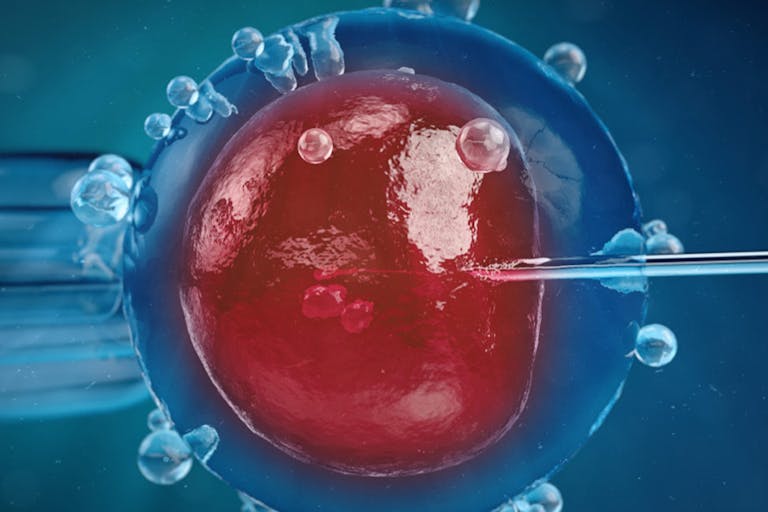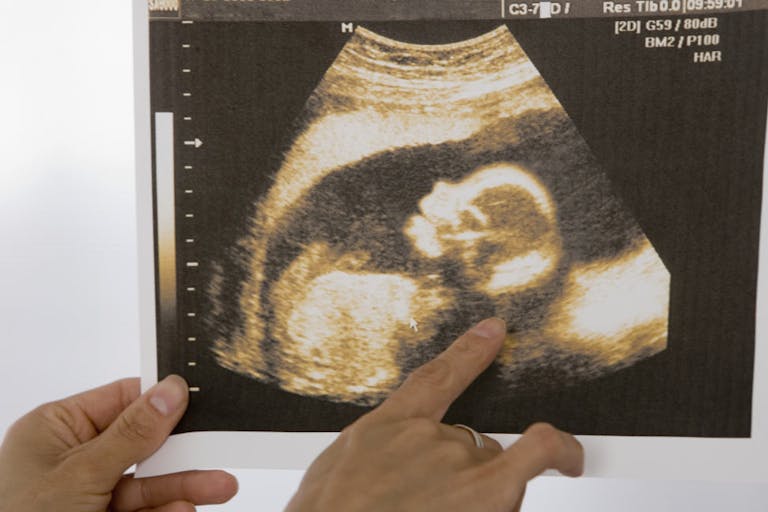
Can IVF ever be ethical? Here are some things to consider.
Nancy Flanders
·
My doctor advised me to abort immediately. I refused, and my son is thriving.
(Oregon Right to Life) My husband Brian and I were 24 years old and had been happily married for three years when we learned that I was pregnant with our first child. I was born with multiple congenital heart defects, and although I had been cleared for pregnancy by my cardiologist, we were referred to the specialist hospital for our 13-week ultrasound.
We drove the hour commute and anxiously waited in the lobby for my name to be called. I was impatient to see our baby for the first time and excited to leave the hospital with an ultrasound photo to make our exciting announcement to friends and family.
When it was finally my turn, I followed the tech through the beige colored hallway and gently placed my hand on my stomach. I wasn’t sure if it was churning from the nerves or just the unfortunate realities of being in the first trimester.
Brian held my hand as I lay on the exam table, and the tech turned his focus to the fuzzy black and white picture on his small screen. And then suddenly there he was—our baby. Even with my untrained eyes, I could clearly make out his head and tiny body, two small arms, legs, hands, and feet. He was real!
We spent the appointment asking questions and basking in the glow of becoming first-time parents. But it was when the tech finished the exam and flipped on the lights that I saw his face fully for the first time.
Something was wrong.
“I’ll just grab the doctor to go over things with you.” And then he was gone.
“Have you ever heard of gastroschisis?” The doctor entered and bluntly questioned Brian and me. Unintentionally, I found my brain recalling a Grey’s Anatomy episode, and I instantly knew that was not an encouraging sign.
“Gastroschisis is a rare non-genetic defect in which a fetus’s intestines and other organs develop on the outside of the body.” She paused briefly and then powered on, because for her, this was just another day at the office. “This is not the only issue, though. With your heart condition, it is likely that your heart valve is not strong enough and will burst at any moment. With both of these significant problems, I advise that you abort before leaving today.”
The edges of my reality began to blur as I sat speechless on the crinkly paper. I sensed Brian standing near me and reaching out to offer comfort.
“No.” I breathed out. Then, lifting my face and making eye contact, I firmly stated again, “No.”
Article continues below
Dear Reader,
Have you ever wanted to share the miracle of human development with little ones? Live Action is proud to present the "Baby Olivia" board book, which presents the content of Live Action's "Baby Olivia" fetal development video in a fun, new format. It's perfect for helping little minds understand the complex and beautiful process of human development in the womb.
Receive our brand new Baby Olivia board book when you give a one-time gift of $30 or more (or begin a new monthly gift of $15 or more).
In her exasperation, the doctor rotated and then aimed her gaze at Brian, “Are you going to choose this fetus over your wife?” She spit out the words as an accusation more than a question.
I went home that day and put the ultrasound photo of my son on the fridge just as I had dreamed. But out of fear, I placed an additional magnet over the portion of the picture where now I could not unsee the daunting diagnosis. Over the next week, Brian and I worked through conversations that you never expect to have in your twenties. How do you prepare to die?
Although the storm raged in my heart and head, I never once doubted our decision to leave the hospital that day. I knew that the journey would be hard and potentially heartbreaking, but it was not wrong. I knew it was not our choice to decide whose life was more valuable. It was not up to us to decide how or when either of us would leave this world. That is power we were not meant to hold. I may not have fully understood God’s plan, but I could have faith that He does not make mistakes. Sometimes faith means just taking the first step and then the next and then the next—but the fear may never go away.

Over the next five months, we fought hard for our son. We found a new doctor who was willing to work with us, and I went to three appointments a week for ultrasounds, fetal monitoring, and cardio screening. In November of 2009, our son Davis entered the world. After immediate surgical intervention and time in the NICU, he went home as a happy baby with strawberry colored hair and big, dark brown eyes. For months after the delivery, I also continued to undergo cardiology testing. Eventually, doctors came to the conclusion that my heart was in fact strong enough for pregnancy: The doctor had been wrong.
It has been sixteen years since we walked away from that initial appointment.
I still have the ultrasound photo but I now also have additional photos of Davis’s first cowboy birthday party, his first day of school, his first lost tooth, his first cast being cut off, and the first time he drove a car —a million small moments culminating in a slideshow of a life being lived.
The crazy part of our story is not the rare diagnosis or even the doctor being wrong. The crazy part of our story is that the culture tried to convince us that the baby in the first black and white photo held less value than in the photos that followed.
That is a lie.
A life at every stage of development holds infinite value and is always worth fighting for.
Just ask our son.
Editor’s Note: This article was originally published at Oregon Right to Life and is reprinted here with permission.
Live Action News is pro-life news and commentary from a pro-life perspective.
Contact editor@liveaction.org for questions, corrections, or if you are seeking permission to reprint any Live Action News content.
Guest Articles: To submit a guest article to Live Action News, email editor@liveaction.org with an attached Word document of 800-1000 words. Please also attach any photos relevant to your submission if applicable. If your submission is accepted for publication, you will be notified within three weeks. Guest articles are not compensated (see our Open License Agreement). Thank you for your interest in Live Action News!

Nancy Flanders
·
Guest Column
Stefano Gennarini, J.D.
·
Guest Column
Liberty Counsel
·
Guest Column
Right to Life UK
·
Politics
Right to Life UK
·
Guest Column
Mark Lee Dickson
·